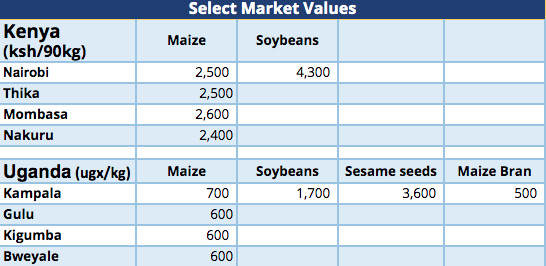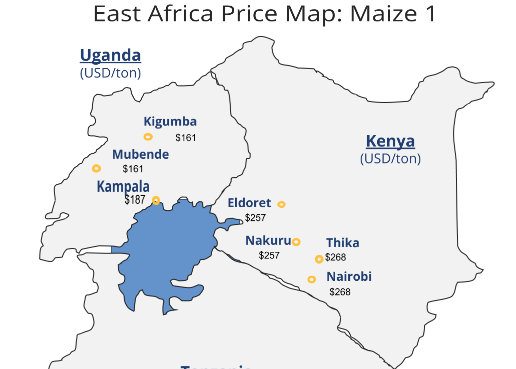Africa News
Africa Newsletter 02-05-21
East Africa Update
Russian Tax Rise Signals Higher Wheat Flour Cost
Major wheat exporter Russia announced the introduction of a duty for the export of wheat at 25 Euros per ton (KES 3,225) due to the shortages in the country and a move to stop domestic prices for bread from increasing. This intervention by the government in Moscow will hurt Kenya’s imports and has already has seen the price of bread on shelves increase.
The Business Daily reports on how this new tax, expected to last until June, will continue to put pressure on the global wheat prices and the current market indication for wheat delivered to Mombasa is KES 33,000 per ton compared to KES 25,300 last year.
Millers in Kenya are lobbying the government to remove the import duty on the raw material in order to protect the customer. The current tax on imported wheat is 10% and the millers argue that this intervention would be helpful, as international prices cannot be controlled domestically.
Kenya Market Update
Kenya is still experiencing high maize prices between KES 2,700 and KES 2,800 per 90 kg bag with some millers happy to pay the premium for good quality grain. Uganda’s new crop is expected to fill in the gap with its current harvest underway and the next crop in Kenya still a few months away.
Soybeans remain a challenge for importers with a small crop in Uganda, import duty on Ethiopian origin and a few months away from the Malawi and Zambia crop. Soybeans are still being indicated at circa KES 48 per kg in Nairobi.
Uganda Market Update
The Kampala maize price is now circa UGX 650 per kg and is expected to decline with the support of more dry grain coming into the market over the next few weeks. Maize bran is currently available at UGX 500 per kg in Kampala while maize grit with lowered extraction is being offered to animal feed producers, as a possible alternative in the feed mixes.
Soybeans are still indicated above UGX 1,700 per kg as a small crop is being expected which will keep prices higher than anticipated by traders. Yellow beans continue to trade at UGX 2,700 per kg in Kampala while Nambale beans are available at UGX 2,500 per kg.
46% Of Uganda’s Exports Go To Middle East
The Ministry of Finance in Uganda has confirmed through its data that The Middle East is now the leading destination for the country’s exports as an increase of mineral exports saw at least 46% of exports going to The Middle East.
In October 2020, Uganda exported $165 million worth of gold to the UAE but lower than the $221 million the country earned in gold exports in September 2020 as the precious metal continues to average $200 million of monthly exports to the Middle East as reported in The Monitor.
Fear Of Looming COMESA Imports Cuts Sugar Price
Sugar prices in Kenya have seen a fall in price with a 2kg packet at KES 220 from KES 235 seen in January, as a 1 kg pack is down to KES 115 from KES 125 in the same period but some retailers are pricing a 2kg packet at KES 214.
According to The Nation, millers claim that the fall in price is linked to distributors expecting cheaper imports from COMESA and so have resulted in offering lower prices for their 50kg bags from KES 4,700 to KES 4,400. COMESA sugar has been blamed for causing the price fall in the past and this time around it is no different from the country’s annual intake from the region at 350,000 metric tons.
Sesame Shortage Hits Ethiopia Commodity market
The recent conflict in Tigray has affected the production and supply of sesame seeds to the local market where the Ethiopian Commodity Exchange is facing challenges in offering adequate quantities.
According to The Reporter, the Tigray region is one of the largest producing areas in the country and as a result, the disruption has affected producers trying to reach the market plus the exporters that have the demand with estimates of $20 million per month being lost in general export earnings.
The exchange announced that it had facilitated the trade of 115,000 metric tons of sesame in the first half of the current financial year and achieving its targets but local traders are struggling to get the product as a month ago between 500-700 tons were being marketed daily but now it is averaging 50 tons daily.



